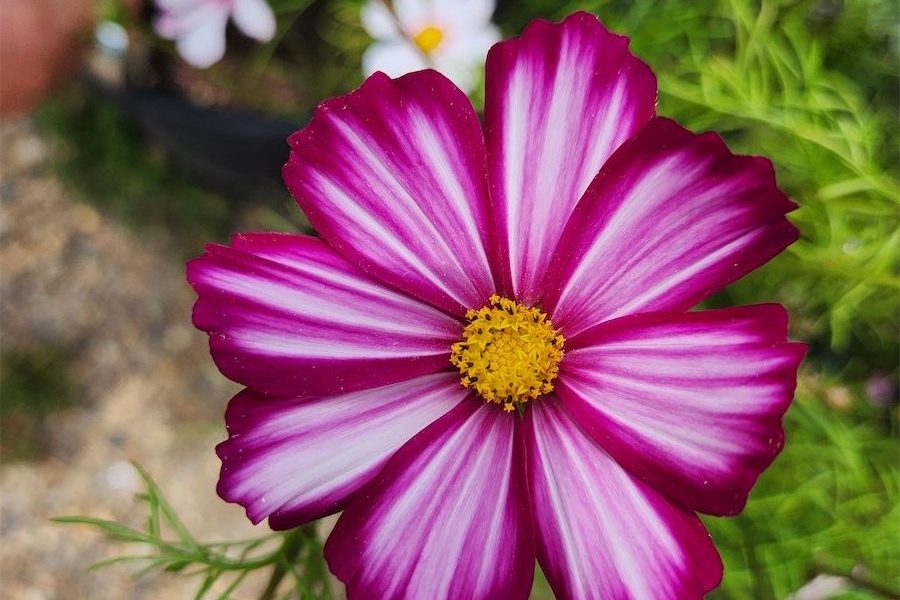
Annuals that bring in the bees and pollinators to bugs that eat plants and small trees… here’s a gardening column that’s got it all from JACKIE WARBURTON.
COSMOS are terrific fillers in the cottage garden that not only attract bees and pollinators, but the flower colour range is also forever changing with new varieties released every season.

They are an annual, which means they are sown, grown and flower all in the same year.
However, there is the Chocolate Cosmos (Cosmos atrosanguineus), a perennial cosmos that grows from a tuber called.
This is a highly sought after chocolate-scented plant with deep crimson flowers and is a charming and graceful addition to the garden. It grows in full sun and good moisture is required.
Growing annuals from seed is a very economical way to get a lot of flowers for very little cost. Packets can range from 10 seeds to hundreds and can be as little as a few dollars a packet, but be mindful of the expiry date.
Seed can be soaked overnight to help with the germination if needed and sowed in seed-raising mix. Place a little bit of washed river sand over the seed to help with any fungal issues and drainage.
Some easy seeds for beginners would be Iceland Poppies, Corn Flowers and Love in the Mist.
Small critters will need to be kept at bay while the seedlings are young and sprinkle diatomaceous earth around the seedlings and keep moist.
AMONG the annuals that grow well once established and need little water and flower through summer is Angelonia.
A personal favourite, it has delicate flower spikes and, growing to 30 centimetres tall, is great for container plants in a hot location. Its colours range from purple to pinks and whites. Mixed with cosmos, it’s a must-have for a cottage garden.

PASSIONVINE hoppers, which are in abundance this time of the year, do quite a bit of damage to plants and small trees by reducing vigour and yield if not kept in check.
Passionvine hopper (Scolypopa australis) is a native and should only be sprayed at a last resort (when there is more than 50 per cent damage to a plant) with a mild pyrethrum in the cool of the day.
Vine hoppers eat plants such as sunflowers, rhubarb, cherry trees and in my case, maple trees. They’re easy to see, but hard to spray when they’re hopping away. In their juvenile stage, they are small insects with fluffy bums. At this stage they are easy to see and easier to catch and squash to keep the population from exploding.
Its natural enemies are mainly parasitic wasps. To encourage these wasps into the garden, Use flowers such as carrots, fennel and cosmos to encourage wasps into the garden.
Jottings
- Make sure there are dishes of water for the birds and lizards.
- Pick fruit as it ripens and put in cold storage immediately.
- Give vegetables liquid fertilisers every two weeks.
- Deadhead dahlias for a continual display into autumn.
Who can be trusted?
In a world of spin and confusion, there’s never been a more important time to support independent journalism in Canberra.
If you trust our work online and want to enforce the power of independent voices, I invite you to make a small contribution.
Every dollar of support is invested back into our journalism to help keep citynews.com.au strong and free.
Thank you,
Ian Meikle, editor





Leave a Reply